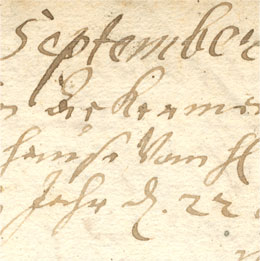Why is the Karuse church retable considered to be the work of Christian Ackermann?
The early classicist stone retable, completed in 1787, has three wooden sculptures carved by Christian Ackermann: Christ the Invincible and two figures holding books; one is a figure without a beard, depicting John the Evangelist, and the other is either Matthew the Evangelist or John the Baptist. They most likely originate from the Karuse church pulpit: Christ from the tip of the sounding board, and the figures holding books from the corpus.
Another possibility is that the figures, like the pulpit, originate from a previous retable commissioned for the Karuse church from Ackermann’s workshop. The church pulpit’s distorted iconographic programme (see the pulpit), the ideal suitability of the old cornice figures of the new retable for the pulpit, and the fact that it is hardly likely that Ackermann’s retable would have been replaced by a new one less than 100 years later are all arguments against this possibility. The church altar is sacred and its decorative retable is an expensive element that is not replaced if there is no urgent need to do so (for instance, destruction by fire, or the complete redesign of the entire church space).

